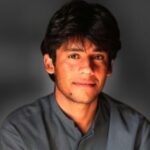The government of Pakistan is blamed by many international and national human rights groups for its rigid counter insurgency policies and involvement of security forces in serious human rights abuses in Balochistan. Amnesty International names it “Kill and Dump” policy. We also received reports that state security institution are backing and sponsoring death squads and religious extremist groups against nationalist parties in different parts of Balochistan.

On 23rd of October, 2016, 21 year old Khumar Baloch s/o Mohammad Ishaq who was Zonal Deputy Organizer of Baloch Student Organization Azad in Jhao, was attacked by a religious group (locally called ISIS) in Korak, Jhao, district Awaran where he escaped the attack but some miles ahead Para-military force Frontier Corps had blocked the road and shot him dead. This is not the first incident of its kind. Religious groups have been targeting nationalist groups time to time in different parts of Balochistan.
On 27 August, 2015, Bakhtiyar Baloch, 83 and father of Student leader and ex Secretary General of Baloch Student Organization Azad was shot dead in Zikr Khana, temple of Zikris, an Islamic Sect along with 7 other people. Lashkar-e- Khurasan, a terrorist religious group claimed responsibility of the attack and declares Zikris as infidels. In Gichk Panjgur, many holy places of Zikris were also burned down by these religious groups on 21 September, 2016.
The spokesperson and Central Information Secretary of Baloch Student Organization Azad, Shabir Ahmed was abducted by security forces in a heavy military operation in Gwarkop, district Kech on 4th October,2016. Since then he is missing. His family is on hunger strike for 3 days in front of Karachi Press Club for his safe recovery.

Hasil Baloch, Zonal Organizer of same organization (BSO-A) in Mashkay, was killed the next day when he was arrested, dragged and was shot dead by security forces in front of people in Kolwah, district Kech. His family had suffered the loss of his elder son Fida Baloch, too. He was abducted by security forces on March 24, 2014 from Quetta and was found dead in December, 2015
In the same operation Latif Baloch, a shepherd was also abducted and his mutilated body was recovered from Turbat after 10 days.
In an another incident on 23rd of October, 2016, Security Forces raided house of Naseer Ahmed in Nasirabad, District Kech and abducted his sons Shakil and Rashid. Shakil was terribly beaten and left in a far off place from where he found his way back home later while Rashid is still missing.
Rashid is a government servant and a poet. He is also known as Rashid Mairaj.
Three dead bodies were found in Qalat, Balochistan on October 22, 2016. The bodies were years old and were beyond recognition. There were only bones and skulls remaining.
In Gyandari, district Dera Bugti a body was thrown from helicopter on 22 October, 2016 and is recognized as Sammi Baloch wife of Panda Bugti. She was abducted last month while her husband, son and daughter were killed in that army operation.
The intense use of force has transformed Balochistan into a terror zone for locals, where death and insecurity is ruling days and nights. The worsening situation and silence of Human Rights Organization and media have created a humanitarian crisis in Balochistan.

Comments are closed